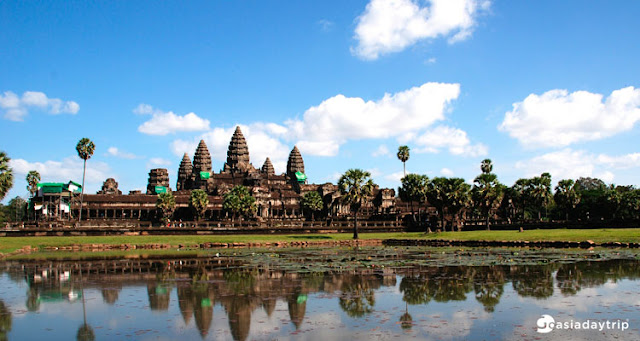Traveling to “temples country” Cambodia and explore the beauty of the unique Angkor temples will be an experience that you never forget. If you do not have time to explore all the temples here then these are some beautiful and unique temples that you cannot miss when visiting Angkor relics:

Best Angkor Temples – This is the most famous temple in Cambodia, built by King Suryavarman II in the 11th century, this was a Hindu Temple, but after the Khmer dynasty follow Buddhist, the Angkor Wat has become a Buddhist Temple.
Angkor Wat is really huge and is surrounded by a large wall. In front of the temple, there are many is lotus lakes, looks very graceful. Because of this temple is very famous; therefore Angkor Wat always attracts many tourists from around the world to visit. Tourists usually come here before 6am to watch the sun rise, and then visit the main temple. Waiting in line to climb on top of the tower and you will see, the wait is not in vain.
 Bayon Temple is located in the center of Angkor Thom – the last capital of the Angkor Empire. Initially, the temple has 54 large and small towers, but now it has only 37 towers relatively intact.
Bayon Temple is located in the center of Angkor Thom – the last capital of the Angkor Empire. Initially, the temple has 54 large and small towers, but now it has only 37 towers relatively intact.
On each towers there are giant faces carved into stone overlooking the four directions. The face smiles mysteriously made Bayon become one of the most impressive temples and most emotional of Angkor.
1.Best Angkor Temples – Angkor Wat

Best Angkor Temples – This is the most famous temple in Cambodia, built by King Suryavarman II in the 11th century, this was a Hindu Temple, but after the Khmer dynasty follow Buddhist, the Angkor Wat has become a Buddhist Temple.
Angkor Wat is really huge and is surrounded by a large wall. In front of the temple, there are many is lotus lakes, looks very graceful. Because of this temple is very famous; therefore Angkor Wat always attracts many tourists from around the world to visit. Tourists usually come here before 6am to watch the sun rise, and then visit the main temple. Waiting in line to climb on top of the tower and you will see, the wait is not in vain.
2. Bayon Temple

On each towers there are giant faces carved into stone overlooking the four directions. The face smiles mysteriously made Bayon become one of the most impressive temples and most emotional of Angkor.
Comments
Post a Comment